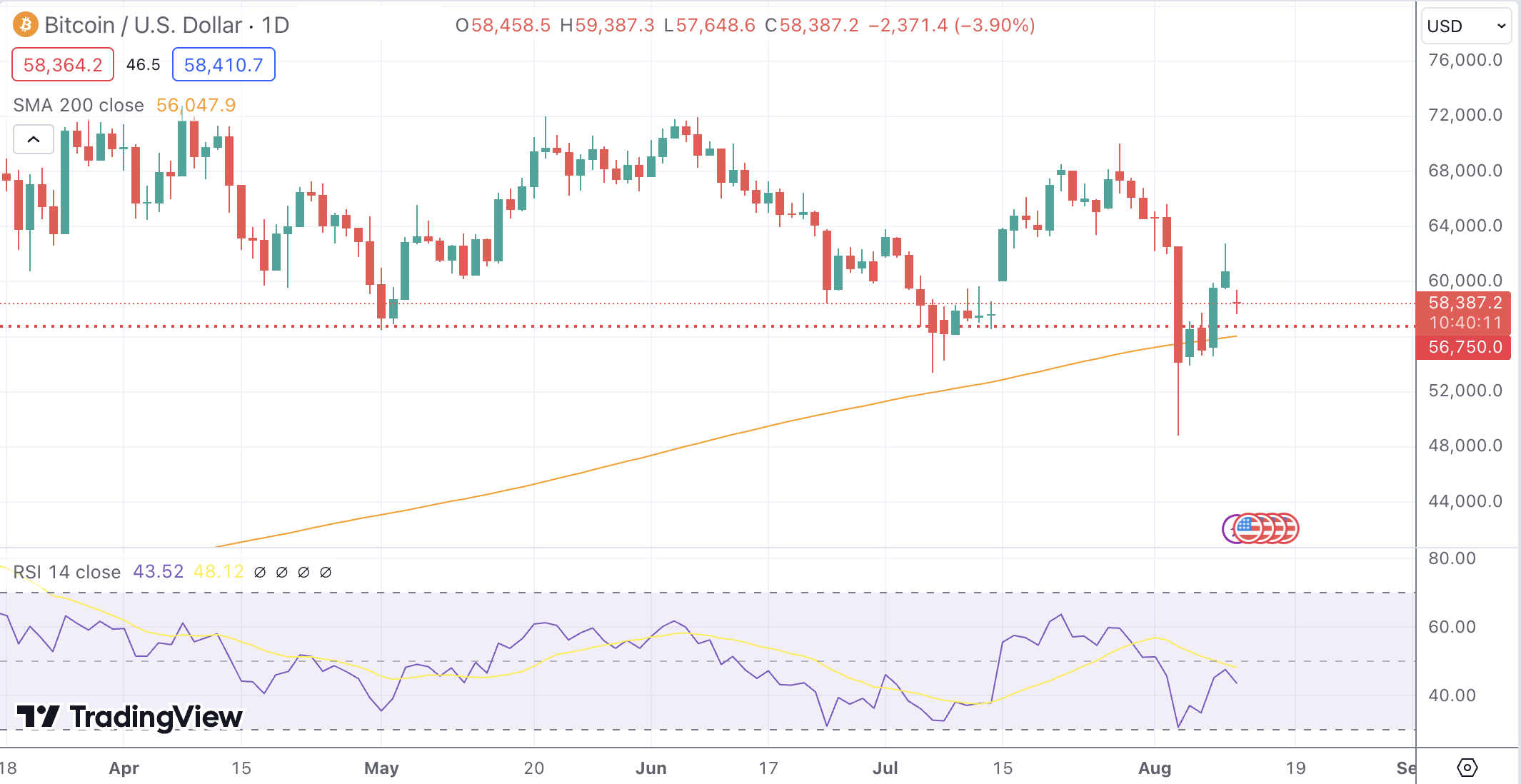Key Takeaways
- Bitcoin experienced a 32% drawdown, the largest in the current cycle, with significant losses among short-term holders.
- The MVRV ratio falling below its 365-day moving average historically signals potential further declines.
- Key support levels at $56,750 are critical, with potential resistance around $59,000 to $60,000.
- The Federal Reserve’s potential rate cut in September could provide a bullish backdrop for Bitcoin.
- Market participants should prepare for continued volatility in the week ahead.
Market Dynamics and Recent Performance
Bitcoin (BTC) has experienced a turbulent week, marked by a significant sell-off that saw the price drop to a low of $49,440 before partially recovering to around $58,298.61 by week’s end. This decline has been attributed to a combination of factors, including fears of an impending recession, geopolitical tensions, and the unwinding of the Japanese yen carry trade. The sell-off has resulted in a 32% drawdown, the largest in the current cycle, causing considerable losses among short-term holders, who accounted for 97% of the realized losses.
The market’s volatility is further evidenced by the sharp fluctuations in Bitcoin’s Market Value to Realized Value (MVRV) ratio, which fell below its 365-day moving average. Historically, this has been a precursor to further declines, as seen during the COVID market crash and other significant downturns. However, there has been a notable increase in stablecoin exchange netflows, with nearly $2 billion moving into exchanges, suggesting that some investors are buying the dip in anticipation of a rebound.
Technical and Fundamental Influences
From a technical perspective, Bitcoin is currently navigating a critical juncture. The key support level at $56,750 is being closely watched, as losing this support could lead to further declines toward $54,750. On the upside, resistance levels are present around $59,000 to $60,000, and a break above these could signal a potential recovery. The technical indicators are largely bearish in the short term, with strong sell signals across various timeframes.
Fundamentally, the market is also influenced by macroeconomic factors, particularly the actions of central banks. The Federal Reserve is expected to cut interest rates in September, following rising unemployment and sluggish economic data. A lower interest rate environment could be bullish for risk assets like Bitcoin, as it reduces the cost of borrowing and increases liquidity in the market. Similar rate cuts by other major central banks, including the Bank of England and the European Central Bank, have also set a precedent that could support Bitcoin’s price in the coming weeks.
Looking Forward
As Bitcoin enters the new week, market participants are cautiously optimistic. The potential for further downside remains if key support levels are breached, but there is also the possibility of a recovery if buying interest continues to strengthen. The performance of Bitcoin in the coming week will likely hinge on the interplay between technical resistance levels and broader macroeconomic developments, particularly any signals from the Federal Reserve regarding monetary policy.
In summary, while the immediate outlook for Bitcoin is uncertain, the combination of technical signals and fundamental drivers suggests that the market could experience continued volatility. Traders and investors should remain vigilant and consider both the risks and opportunities as the market evolves.


